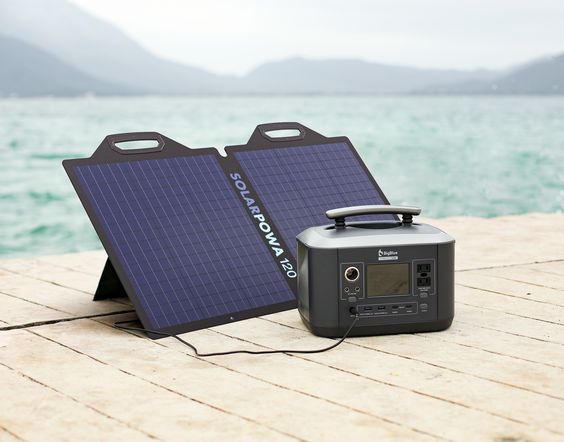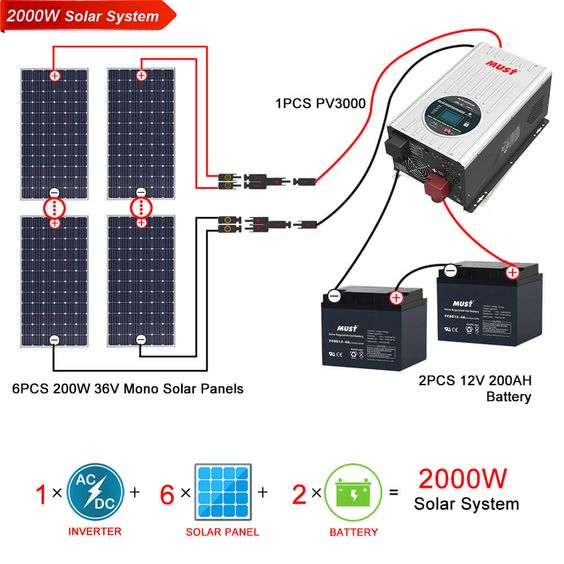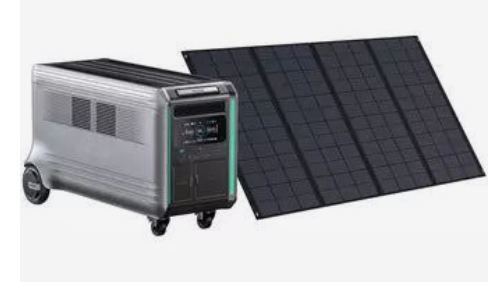Solar Energy Storages:The Key to a Sustainable Future at an Affordable Price
In a world striving for sustainability and cost-effectiveness, solar energy storage emerges as the key solution to both challenges. As the demand for clean energy continues to rise. So does the need for efficient storage systems that can harness the power of the sun and make it available when the grid is not. Solar energy storage not only ensures a continuous and reliable power supply but also allows homeowners and businesses to save on electricity bills in the long run. With advancements in technology, the cost of solar energy storage systems has significantly decreased, making it a more accessible option for individuals and organizations alike. By combining the sun's renewable energy with efficient storage solutions. We can pave the way for a sustainable future that is not only environmentally friendly but also financially viable.
The Importance of Solar Energy Storages
Solar energy storage plays a crucial role in our transition towards a sustainable future. While solar panels are effective at generating electricity during daylight hours. They cannot produce power when the sun is not shining. This is where energy storage comes in. By capturing and storing excess energy produced during the day. Solar energy storage systems ensure a constant power supply even during cloudy days or nighttime. This reliability is particularly important for regions with unreliable grid connections or during power outages. Solar energy storage also helps balance the load on the grid by providing electricity during peak demand periods. Reducing the strain on traditional power plants and enhancing the overall stability of the energy system.

The Challenges of Solar Energy Storages
Despite its numerous benefits, solar energy storage faces several challenges. One of the main obstacles is the efficiency of storage systems. Converting and storing solar energy can result in energy losses, reducing the overall effectiveness of the system. Additionally, the cost of storage technologies has traditionally been high, making it less accessible for many individuals and businesses. However, with advancements in battery technology and economies of scale, the cost of solar energy storage systems has been steadily decreasing, making it a more viable option for a broader range of customers.
Another challenge is the integration of solar energy storage into existing infrastructure. The grid infrastructure was primarily designed for centralized power generation. Making it challenging to accommodate decentralized energy sources like solar panels. Upgrading the grid to handle bidirectional power flow and incorporating energy storage systems requires significant investment and planning. However, these challenges are not insurmountable, and with the right policies and incentives in place, the integration of solar energy storage can be achieved.
Types of Solar Energy Storage Systems
There are several types of solar energy storage systems available today, each with its own advantages and limitations. The most common type is battery storage, which stores excess energy generated by solar panels in rechargeable batteries. These batteries can then be used to power homes or businesses during periods of low or no sunlight. Lithium-ion batteries, in particular, have become popular due to their high energy density, longer lifespan, and faster charging capabilities. Other types of batteries, such as lead-acid and flow batteries, also offer viable solutions for solar energy storage.
Another type of solar energy storage is thermal storage, which captures and stores solar heat for later use. This is particularly useful for heating and cooling applications, such as water heating or space heating in buildings. Thermal storage systems can store excess heat generated during the day and release it when needed, reducing the reliance on traditional heating and cooling systems.
Benefits of Solar Energy Storage
Solar energy storage offers numerous benefits for both individuals and the environment. For homeowners and businesses, energy storage allows for greater energy independence and flexibility. With a solar energy storage system, excess energy generated during the day can be stored and used during the evening or during power outages, reducing reliance on the grid and potentially saving on electricity bills. Additionally, solar energy storage enables peak shaving, where stored energy is used during periods of high electricity demand, helping to reduce peak demand charges.
From an environmental perspective, solar energy storage helps reduce greenhouse gas emissions by enabling the use of renewable energy sources. By storing excess solar energy and using it when needed, the reliance on fossil fuel-based power plants is reduced, resulting in a lower carbon footprint. Solar energy storage also contributes to grid stability by providing a decentralized and distributed energy source, reducing the risk of blackouts and improving overall system resilience.

How Solar Energy Storage Works
Solar energy storage systems work by capturing and storing excess energy generated by solar panels for later use. When sunlight hits the solar panels, it generates direct current (DC) electricity. This electricity is then converted into alternating current (AC) electricity using an inverter, which is compatible with the electrical appliances and the grid. The excess energy produced during the day is directed to the energy storage system, where it is stored for later use.
In battery storage systems, the excess energy is stored in rechargeable batteries, which can be charged and discharged as needed. The batteries are connected to the electrical system of the building or facility, allowing stored energy to be used during periods of low or no sunlight. In thermal storage systems, excess energy is used to heat a thermal storage medium, such as water or rocks. The stored heat can then be used for various heating and cooling applications when needed.

Factors to Consider When Choosing a Solar Energy Storage System
When choosing a solar energy storage system, several factors need to be considered. The first factor is the capacity of the storage system, which determines how much energy can be stored and used. The capacity should be chosen based on the energy needs of the building or facility and the desired level of energy independence.
Another important factor is the efficiency of the storage system. Higher efficiency means less energy loss during the charging and discharging process, resulting in more usable energy being stored. The efficiency of the storage system can vary depending on the type of technology used. So it's essential to compare different options and choose the most efficient one for the specific application.
The lifespan of the storage system is also a key consideration. Batteries, for example, have a limited lifespan and will need to be replaced after a certain number of cycles. It's important to choose a storage system with a long lifespan to maximize the return on investment.
Other factors to consider include the cost of the storage system, the warranty provided by the manufacturer, and any additional features or functionalities that may be required. Consulting with a solar energy storage expert can help navigate these considerations and choose the right system for specific needs.
Examples of Successful Solar Energy Storage Projects
Across the globe, numerous successful solar energy storage projects have showcased the potential and effectiveness of this technology. One notable example is the Hornsdale Power Reserve in South Australia, which is currently the largest lithium-ion battery storage facility in the world. The project, developed by Tesla, has a capacity of 150 megawatts and has been instrumental in stabilizing the grid and providing backup power during periods of high demand.
Another example is the Kita-Toyotomi Solar Park in Japan, which combines solar energy generation with a flow battery storage system. The park has a capacity of 10 megawatts and provides a stable power supply to the local community, even during typhoons or other natural disasters.
These projects demonstrate the feasibility and benefits of solar energy storage on a large scale, paving the way for further adoption and expansion of this technology.
The Future of Solar Energy Storage
The future of solar energy storage looks promising, with ongoing advancements in technology and increasing investments in renewable energy. Battery technology, in particular, is expected to continue improving, with higher energy densities, longer lifespans, and lower costs. This will make solar energy storage systems even more efficient and affordable, further driving their adoption.
Additionally, the integration of solar energy storage with other renewable energy sources, such as wind and hydro, will create a more robust and reliable energy system. By combining multiple sources of renewable energy with efficient storage solutions. We can ensure a continuous and sustainable power supply for future generations.
Policy support and incentives will also play a vital role in the future of solar energy storage. Governments and regulatory bodies can encourage the adoption of solar energy storage by providing favorable policies, such as feed-in tariffs or tax incentives. These measures can help accelerate the transition to a renewable energy future and create a more sustainable and resilient energy system.
Cost Considerations of Solar Energy Storage
The cost of solar energy storage systems has been a significant barrier to adoption in the past. However, as technology improves and economies of scale are realized, the cost of storage systems has been steadily decreasing. Lithium-ion batteries, for example, have seen significant cost reductions in recent years. Making them more accessible to a broader range of customers.
When considering the cost of solar energy storage, it's essential to take into account the upfront investment required, as well as the potential long-term savings. While the initial cost may be higher compared to traditional energy sources. The long-term savings on electricity bills and the potential for grid independence can offset the initial investment.
It's also worth noting that the cost of solar energy storage systems can vary depending on the capacity, technology, and brand. Comparing different options and consulting with experts can help determine the most cost-effective solution for specific needs and budget.
Conclusion
Solar energy storage is the key to a sustainable future at an affordable price. By harnessing the power of the sun and storing excess energy for later use. We can ensure a continuous and reliable power supply while reducing our reliance on fossil fuel-based energy sources. Solar energy storage offers numerous benefits, including energy independence, cost savings, and environmental sustainability. With ongoing advancements in technology and decreasing costs, solar energy storage is becoming more accessible to individuals and businesses worldwide. By embracing solar energy storage, we can pave the way for a brighter and greener tomorrow, where clean and renewable energy powers our homes, businesses, and communities. Join the solar revolution and unlock the potential of solar energy storage to create a sustainable future for generations to come.
